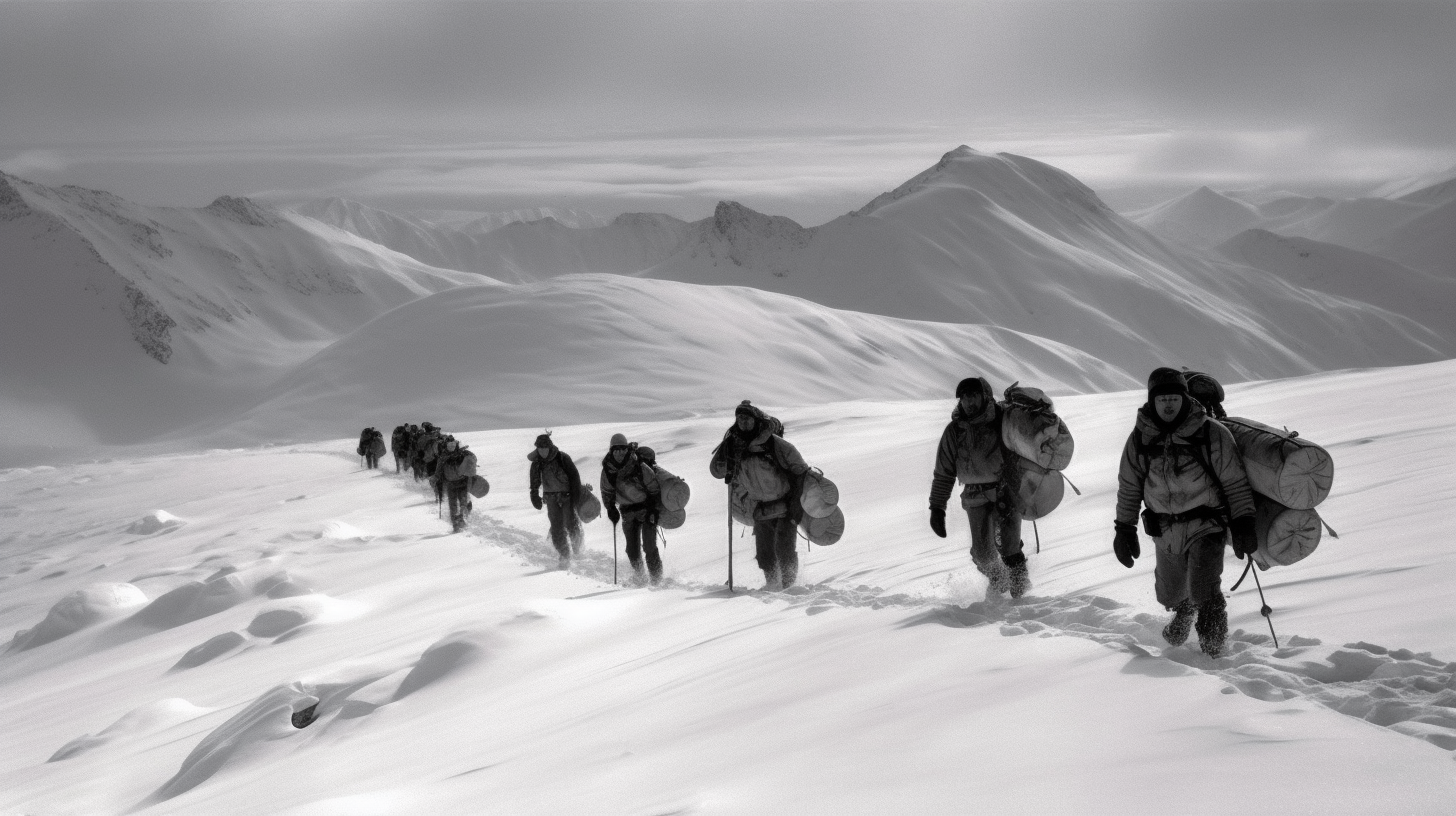In the winter of 1959, a group of nine experienced hikers embarked on a challenging trek through the Ural Mountains in the Soviet Union, unaware that they were journeying into the heart of a mystery that would continue to captivate and confound investigators for decades to come. The Dyatlov Pass Incident, named after the group’s leader, Igor Dyatlov, remains one of the most chilling and enigmatic events in the annals of outdoor adventure and exploration.
The nine hikers, students and graduates of the Ural Polytechnic Institute, set out on their fateful expedition on January 25, 1959, with the goal of reaching the remote and rugged peak of Mount Otorten. The group was well-prepared and experienced, but as they traversed the desolate landscape of the Ural Mountains, they would encounter forces beyond their comprehension.
When the group failed to return as planned, a search and rescue operation was launched, leading to the discovery of a scene that would raise more questions than it answered. The hikers’ tent was found partially collapsed and slashed open from the inside, as if the occupants had frantically attempted to escape an unseen threat. The bodies of the hikers were scattered across the snowy landscape, many clad in only their undergarments, despite the freezing temperatures.
The initial investigation into the Dyatlov Pass Incident revealed a series of strange and inexplicable findings. Autopsies showed that some of the hikers had suffered severe internal injuries, comparable to the force of a car crash, while others had sustained unexplained burns or were missing their eyes and tongues. Bizarrely, no external wounds or signs of struggle were present, and some of the victims’ clothing was found to be highly radioactive.
Over the years, countless theories have been proposed to explain the chilling events of the Dyatlov Pass Incident, ranging from the mundane to the outlandish. Some have suggested that the hikers were caught in an avalanche or succumbed to hypothermia, while others have posited that they were victims of a military experiment gone awry, stumbled upon a secret government facility, or encountered a yet-unknown natural phenomenon. More sensational theories have proposed that the group was attacked by extraterrestrials, cryptids, or even the spirits of the mountains themselves.
In recent years, new investigations and scientific analyses have attempted to shed light on the mystery, with some experts suggesting that a rare weather event known as a “Kármán vortex street” could have produced terrifying infrasound waves that induced panic and disorientation in the hikers. However, despite these advances, no definitive explanation for the Dyatlov Pass Incident has ever been agreed upon, and the case remains officially unsolved.
The Dyatlov Pass Incident continues to fascinate and horrify in equal measure, a haunting reminder of the unknown forces that lurk in the wild and uncharted corners of our world. As the years pass and the mystery deepens, the icy slopes of the Ural Mountains remain a chilling testament to the enigmatic power of the Dyatlov Pass Incident, a cold case that refuses to be silenced by the passage of time.




